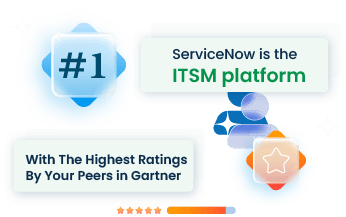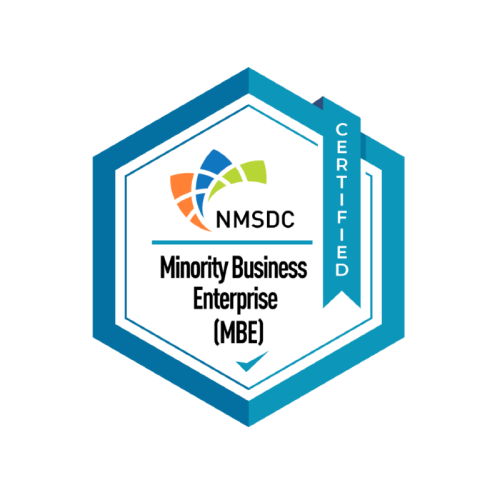“Are you tired of dealing with IT issues that slow down your business? What if there was a way to improve operations and boost productivity effortlessly?
ServiceNow stands at the forefront of IT service management (ITSM), offering a powerful solution that reshapes how businesses operate. This platform automates workflows, integrates seamlessly with existing systems, and provides real-time insights, making it an indispensable tool for modern enterprises. By using ServiceNow, organizations can simplify complex processes, improve security, and maintain uninterrupted communication across teams. Whether it’s for IT management, customer service, or HR operations, ServiceNow delivers a unified experience that drives operational excellence.
Top Benefits of ServiceNow For ITOPs
1. Automate Workflows
Many enterprises claim they’ve automated workflows, but true automation goes beyond just eliminating manual tasks. An intelligent automation system should adapt to real-time business needs rather than just execute predefined actions.
ServiceNow functions as an orchestration framework rather than just a task automation tool. It connects IT, HR, security, and finance, using AI-driven insights to categorize, assign, and resolve tickets efficiently.
2. A Proactive Approach
Most IT teams resolve issues only after they happen. ServiceNow changes that by predicting failures before they disrupt operations.
ServiceNow’s AI-powered ITOM (IT Operations Management) analyzes historical trends, detects potential failures, and alerts teams before they disrupt operations. IT leaders move away from firefighting toward strategic risk reduction.
3. Enterprise Security
Security breaches don’t announce themselves. Unauthorized access, data leaks, and compliance gaps don’t happen if—they happen when.
ServiceNow enforces a zero-trust security model, applying strict access controls at every level. Its role-based permissions, multi-factor authentication, and real-time compliance tracking protect critical business assets.
4. Uninterrupted Communication
Even today, IT, HR, and finance teams often work in isolated silos, slowing down processes that require cross-functional collaboration.
ServiceNow doesn’t just improve communication—it creates a unified operational structure where all business functions can access shared, real-time data instead of manually requesting it.
With built-in integrations across ERP, CRM, and cloud platforms, teams no longer waste time pulling information from multiple sources—it’s all in one place.
5. Incident Management
Flooded with service tickets? Automation alone won’t fix it—intelligent prioritization will. ServiceNow’s AI doesn’t just categorize incidents—it understands their business impact and automatically escalates the most critical issues.
6. Self-Service Portal
A traditional IT self-service portal? That’s just a glorified FAQ. What enterprises need is an intelligent support system that actually solves issues without requiring IT intervention.
ServiceNow’s AI-powered self-service portal learns from past interactions, predicts what users need, and suggests resolutions dynamically. Some enterprises using this have seen support tickets drop by 60%, because employees find solutions before they even think of raising a request.
7. Smooth Integration
Every CTO has been burned by a bad integration project at some point. The nightmare of trying to sync ITSM with ERP, CRM, cybersecurity platforms, and legacy applications? It doesn’t have to be that painful.
ServiceNow’s Integration Hub comes with prebuilt connectors that make linking enterprise systems as simple as plug-and-play. That means data flows instantly across tools, eliminating delays, manual errors, and inefficiencies.
8. A Scalable Solution
Scalability isn’t just about adding more servers or users—it’s about making sure IT performance never suffers, no matter how much your business expands.
ServiceNow’s cloud-native architecture allows businesses to expand operations dynamically without performance bottlenecks. Whether you’re running a 50-person startup or a Fortune 500 enterprise, it adapts to your needs without breaking workflows.
9. Works for All
ServiceNow supports businesses of all sizes, from startups to large enterprises, across industries like finance, healthcare, and government.
With built-in governance, risk management, and compliance automation, ServiceNow helps businesses reduce audit overhead, minimize risks, and stay ahead of regulatory changes.
For businesses operating in remote or hybrid setups, ServiceNow’s mobile integration keeps teams connected, providing real-time access to incidents, user requests, and regulatory updates. This helps organizations maintain compliance while improving efficiency.
10. Improve IT Productivity
Yes, ServiceNow reduces costs. But real IT productivity isn’t just about spending less—it’s about giving IT leaders the space to focus on innovation, not just maintenance.
Enterprises use ServiceNow to increase IT productivity, not just because of automation but also because it increases the IT team’s bandwidth to focus on future-proofing the business.
Practical Steps for Implementing ServiceNow
Implementing ServiceNow can change your business operations, but it requires a clear and structured approach. Here’s a step-by-step guide to help you navigate this process smoothly:
Initial Assessment
Begin with a thorough assessment of your current systems and business needs. Evaluate your IT infrastructure, identify pain points, and outline your goals. This step is crucial to understand where ServiceNow can make the most impact.
- Audit Your IT Systems: Conduct a detailed audit of your existing IT systems and workflows.
- Identify Pain Points: List out the specific issues and inefficiencies you are facing.
- Define Objectives: Clearly outline what you hope to achieve with ServiceNow (e.g., improved workflow, better incident management).
Customization
ServiceNow is highly versatile and can be tailored to meet your specific needs. Customizing the platform ensures it aligns perfectly with your business processes.
- Set Up Custom Workflows: Design workflows that match your operational requirements.
- Use ServiceNow Studio: Use ServiceNow Studio to create custom applications and modules without extensive coding.
- Tailor User Interfaces: Adjust the user interface to ensure it is intuitive and user-friendly for your team.
Training
Proper training is essential to ensure your team can utilize ServiceNow effectively. Focus on making the training comprehensive and ongoing.
- Role-Based Training: Offer training sessions tailored to different user roles within your organization.
- Utilize ServiceNow Learning Paths: Make use of ServiceNow’s learning resources and certification programs.
- Continuous Learning: Encourage ongoing education and regular updates to keep up with new features and best practices.
Integration
Integrating ServiceNow with your existing systems is a critical step. Seamless integration confirms that data flows smoothly and processes are streamlined.
- Assess Integration Needs: Identify which systems and applications need to be integrated with ServiceNow.
- Use IntegrationHub: Utilize ServiceNow IntegrationHub to connect with third-party applications and tools.
- Test Integrations: Perform thorough testing to ensure integrations work correctly and data syncs without issues.
Continuous Improvement
The implementation process doesn’t end at go-live. Continuous improvement is key to maintaining and growing the value of ServiceNow in your organization.
- Monitor Performance: Regularly track key performance indicators to measure the impact of ServiceNow.
- Solicit Feedback: Gather feedback from users to identify areas for improvement.
- Update and Optimize: Regularly update your configurations and workflows based on feedback and performance data.
Conclusion
ServiceNow is a game-changer for businesses. It replaces tedious manual tasks with seamless automation, identifies and addresses issues proactively, and confirms robust data security. With integrated systems, communication becomes efficient, and incident management is swift, reducing downtime.
The self-service portal empowers users to find solutions quickly, improving satisfaction. ServiceNow integrates seamlessly with various systems, providing a scalable solution for businesses of all sizes. It also boosts productivity through centralized IT assets and automated processes.
Ready to transform your business operations with ServiceNow? Start your journey today and see the benefits firsthand. For expert guidance, contact us now.












